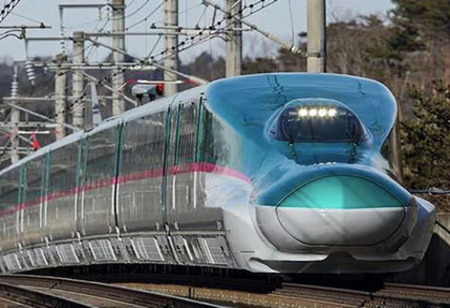
Ashwini Vaishnaw, Japanese Minister Visit Bullet Train Site


Hiromasa Nakano, Japan's minister overseeing land, infrastructure, transport and tourism, inspected the high-speed railway construction site in Surat. Railway minister Ashwini Vaishnaw joined Nakano during the visit, where they examined important project elements such as the track slab laying equipment and track slab adjustment systems.
The high-speed rail corridor in Surat forms part of the larger Mumbai-Ahmedabad High Speed Rail project, designed to link these two major urban centers with trains capable of reaching speeds up to 320 kilometers per hour.
Construction of the Surat bullet train station is currently in progress, with the Gujarat portion of the corridor expected to reach completion by August 26 of the following year.
Also Read: JPMorgan Boosts APAC Hiring to Power Corporate Banking Growth
Vaishnaw and Nakano both voiced their approval of the quality control measures in place and praised the swift construction progress.
This new railway system is designed to dramatically cut down travel times and strengthen economic connections between cities along its path. The route will provide service to Mumbai, Thane, Vapi, Surat, Vadodara and Ahmedabad.
Also Read: South Korea's Take on the European Chips Act is Bitter-Sweet
Nakano's trip to the Surat location demonstrates robust cooperation between India's capital and Japan's capital in executing India's inaugural bullet train project.
Subsequently, Vaishnaw and Nakano embarked on the Vande Bharat train traveling from Surat to Mumbai. During their journey, both Nakano and Vaishnaw spent time in the locomotive operator's compartment for part of the trip, during which Nakano displayed significant curiosity about learning the operational systems of India's high-speed passenger train. According to NHSRCL, "This visit demonstrates the robust partnership between India and Japan in executing India's inaugural High-Speed Rail project."
India's first bullet train service operating between Mumbai and Ahmedabad will feature Japan's E10 high-speed rail vehicles, which will be launched concurrently in both India and Japan. Japan's existing Shinkansen network currently operates using E5 train models. The complete 508-kilometer corridor is being constructed using Japanese Shinkansen engineering.
Also Read: Vietnam's Coffee Industry is Straining Challenges to Achieve Sustainable Development
From the total 508 kilometers, 323 kilometers of elevated structure and 399 kilometers of support column construction has been finished. The project has also achieved completion of 17 river crossings, comprising five reinforced concrete and nine steel structures. NHSRCL has additionally erected over 400,000 sound barriers across 210 kilometers of the finished track foundation. Excavation activities for seven mountain passages in Palghar district continue in Maharashtra, while five kilometers of NATM tunneling from the total 21-kilometer tunnel connecting Bandra Kurla Complex and Shilphata in Maharashtra has been completed. Development of train maintenance facilities in Surat and Ahmedabad is ongoing. The framework construction for all Gujarat stations has reached an advanced phase. Construction has commenced on all three raised stations, and foundation concrete pouring at Mumbai's underground terminal in Maharashtra is underway.

